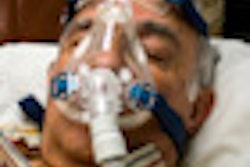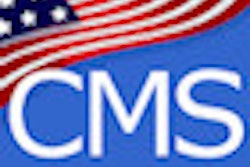
NEW YORK (Reuters Health) Jan. 11 Involuntary sleep-related groaning, or catathrenia, can be successfully treated with continuous positive airway pressure, clinicians from the Stanford University Sleep Medicine Program report in the Jan. 1 issue of Sleep.
Dr. Christian Guilleminault and colleagues note that catathrenia, though rare, can cause significant social problems. They describe seven consecutive patients with catathrenia seen over a 5-year period. All were young women (mean age, 26.7 years) with normal body weight and without obstructive sleep apnea, but with an elevated respiratory disturbance index.
Their nocturnal groaning, which was brought to their attention by family members, was a nightly occurrence at the time of consultation and was considered a significant problem for various social reasons. "The quality of groaning in catathrenia is monotone, and often presents with a morose or sexual connotation," the clinicians explain.
Catathrenia, which was present during REM and non-REM sleep stages, resolved with CPAP therapy in all cases. Five women elected subsequent intervention with soft tissue surgeries such as adenotonsillectomy and three of four women who followed up after surgery required adjuvant treatment with an oral appliance.
"Interestingly," the investigators say, three of the women (43 percent) had a personal history of another parasomnia in childhood and six (86 percent) had prior orthodontic intervention. Five (71percent) had tooth extraction (mostly third molar) during adolescence, which suggests small jaw structure. Craniofacial examination identified findings of a narrow upper airway in all seven women. Two of the women (29 percent) reported another family member with likely catathrenia.
"Our results and the most recent case report in the literature both suggest that catathrenia is a sleep-disordered breathing-related phenomenon that responds appropriately to interventions for sleep-disordered breathing," Dr. Guilleminault and colleagues conclude. They believe that catathrenia is currently misclassified as a parasomnia in The International Classification of Sleep Disorders (ICSD)-2.
Copyright © 2008 Reuters Limited. All rights reserved. Republication or redistribution of Reuters content, including by framing or similar means, is expressly prohibited without the prior written consent of Reuters. Reuters shall not be liable for any errors or delays in the content, or for any actions taken in reliance thereon. Reuters and the Reuters sphere logo are registered trademarks and trademarks of the Reuters group of companies around the world.



















